
South Korea’s capital city is a dazzling, frenetic assault on the senses. Modern rebuilding efforts after the Korean War in the 1950s made it look like something from the film Bladerunner. At night, neon pink flashes against a sky misted by traffic pollution; overhead highways crisscross the scene; and locals knock back Hite beers in tiny bars as K-Pop blasts from the speakers. If someone told you you were on a different planet, you could perhaps be convinced.
But aside from its dazzling skyscrapers, Olympic stadia and omnipresent flashing advertising boards, there’s also a deep sense of history and culture in Seoul. You can learn about the March 1st Movement, the reading of the Korean Declaration of Independence in 1919, and the start of organised resistance to Japanese colonisation of Korea at a museum that opened in 2018 inside Anguk Metro Station. The museum catalogues this freedom-fighting story and points visitors to the many sites around the station linked with the independence struggle.
The global success of Korean music and movies has drawn visitors who want to drink in the scenes so familiar from pop videos and Hollywood smashes. The seedy glamour of the city creeps up from behind you. But if you want to find solace, there are also numerous formal gardens and green spaces like the beautiful Naksan Park, temples and quiet side streets away from the incessant hustle.
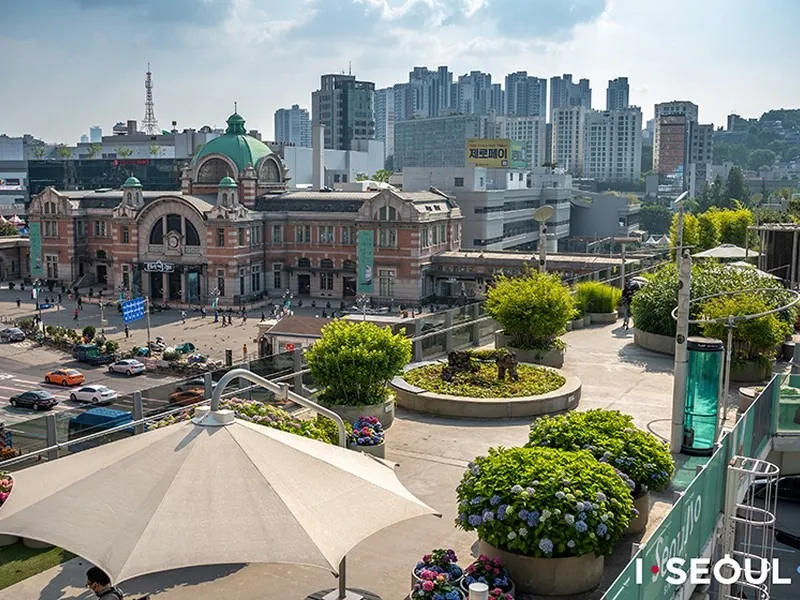
What to do
Stroll Seoul’s High Line
Seoullo 7017 is Seoul’s new calling card – a former piece of road transport infrastructure that has been turned into an innovative pedestrian walkway by architects MVRDV. The oddly narrow former flyover is packed with planters and chillout zones for drinking coffee or watching various live performances, and will strike a chord with anyone who’s enjoyed New York’s High Line. It also provides a functional way to cross the many train tracks running into the city’s main station (open 24/7).
Blast from the past
Charming Bukchon Hanok Village, towards the north of town, is filled with traditional Korean houses that miraculously survived the Korean War bombings of the 1950s. Due to large visitor numbers, there are now many “keep silent” signs and local residents patrolling to enforce a “low noise” attitude, so do be mindful of their concerns. There are also several hanbok shops in this area, specialising in the wide-skirted, bold-coloured national costume, if you’re looking to pick up some traditional attire.
Design distractions
Situated on the site of a former sports stadium, the Dongdaemun Design Plaza is now a Seoul landmark. The sinuous lines of the building, opened in 2014, are unmistakably the work of the late, great Zaha Hadid, aided by local firm Samoo. You can explore its design museum, and there are exhibition halls and boutiques, but arguably the biggest draw is the building itself, with its natty walkways and anthropomorphic forms. Open Tuesday to Friday and Sunday 10am-7pm, Friday and Saturday 10am-9pm.
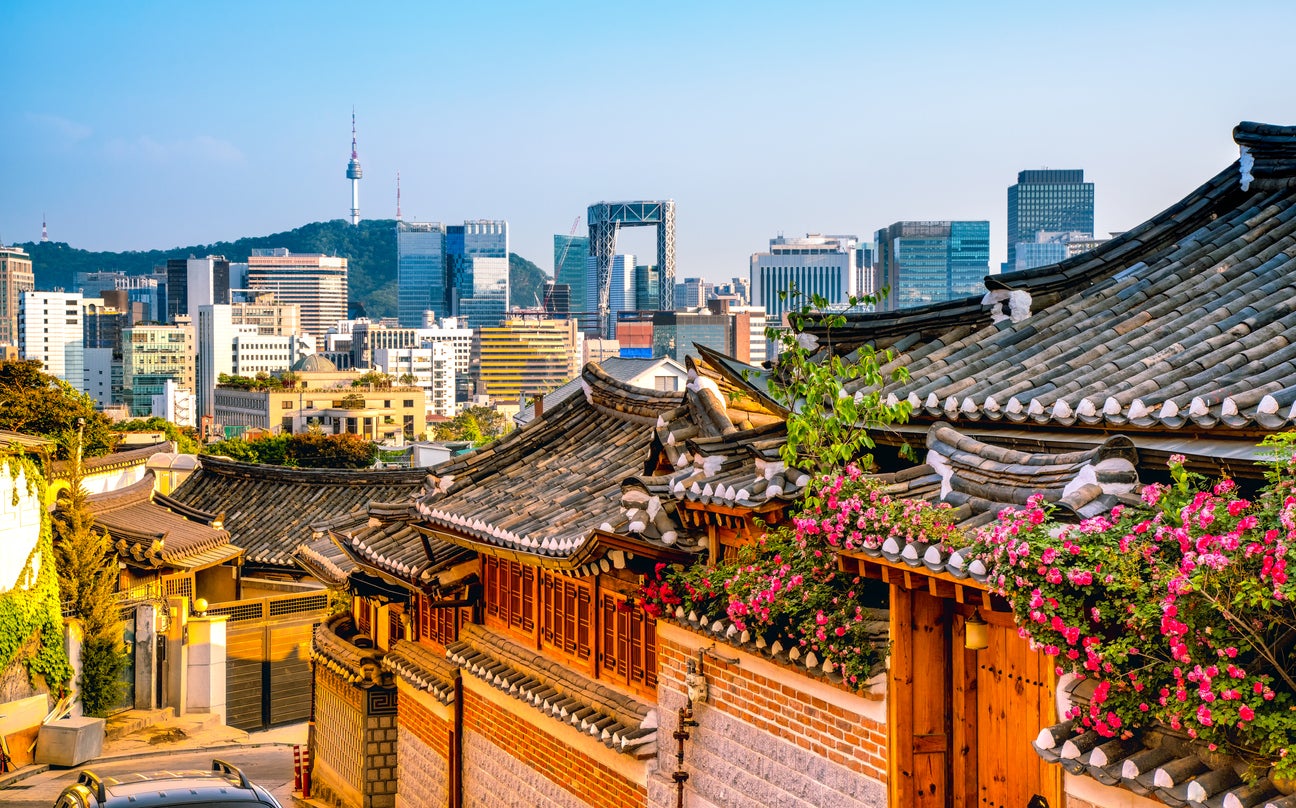
Where to stay
This guesthouse’s bare-brick walls and chic rooftop terrace, complete with barbecue, challenge the typical sweaty-socks smell and peeling-paint vibe of the traditional hostel. Instead, this 15-room hostel-hotel hybrid in Jung-Gu district has a kitchen and laundry facilities, and private double, twin and triple rooms. Doubles from £35, B&B.
Tricked-out and palatial, this huge hotel welcomes guests with a spectacular five-floor atrium, pool and sports centre, and a breakfast spread featuring freshly prepared Korean specialities like kimbap and chili ramen. It’s situated in the chart-topping, modern Gangnam district. Doubles from £188, B&B. ihg.com
Certain rooms get you a view down to the Seoullo 7017, but this Hilton’s central location is especially attractive as you can wander the city on foot. Namdaemun Market is two minutes away, and Seoul Station is a short walk for nationwide trains. Double from £138, B&B. hilton.com
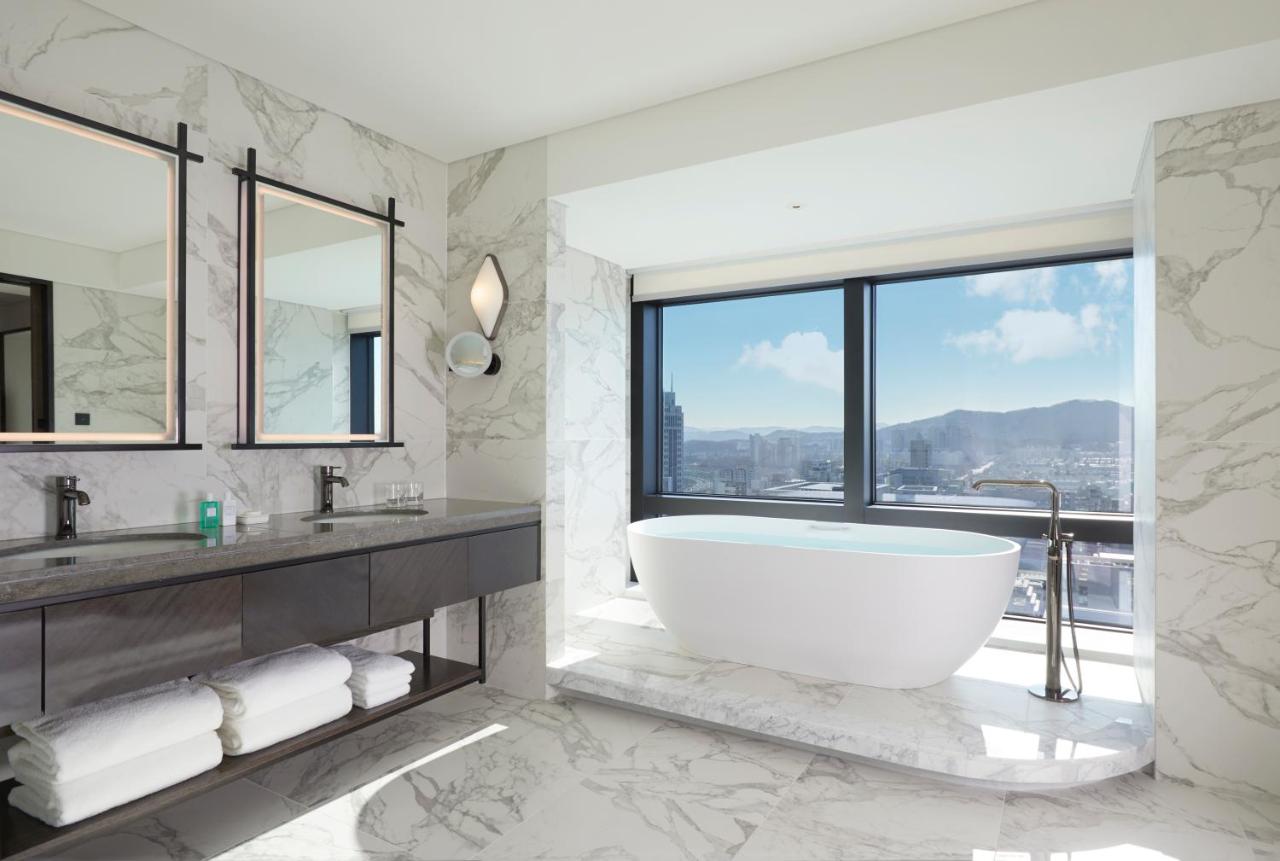
Where to eat
One of Seoul’s most renowned restos has a Michelin nod and is perfect for a fancy night out. Tony Yoo (who once worked at London’s St John restaurant) has crafted a multi-course set menu that begins with soy sauce aged on the roof, and takes in kimchi, Korean pancake, rockfish, beef shortrib and a mind-blowing take on tiramisu. The restaurant is in a wonderfully convivial old building and it all feels very special indeed. Open daily 11.30am-2pm and 5.30pm-8.30pm.
Mung bean pancakes (bindaetteok) and kimbap (the Korean take on sushi-style rice rolls) are the things to eat here, but the choices are endless. One of Korea’s largest traditional markets, it was featured on the Netflix series Chef’s Table. Dozens of stalls fill the air with mouthwatering flavours and there are seats for you to perch on while you scoff your prize. Open daily 8.30am-6pm.
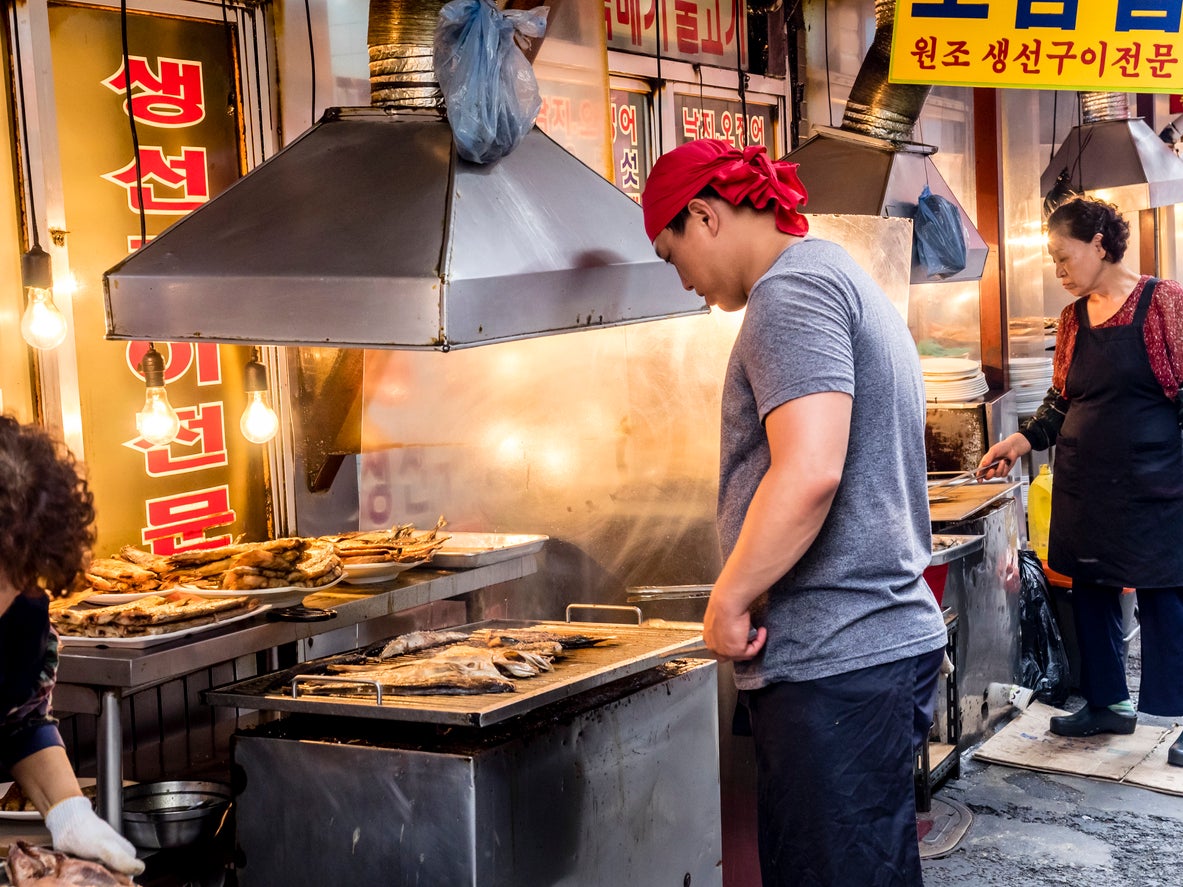
Where to drink
This low-lit, handsome little cocktail bar in the Itaewon neighbourhood is perfect for a late-night dram. There’s a rooftop for warmer nights, and whisky fans are especially well catered for on a creative menu of drinks. Open Wednesday, Thursday and Saturday 7pm-3am; Tuesday, Friday and Sunday 7pm-midnight.
Seoul loves mixing reading with drinking at “book bars”, and this one is elegant and welcoming. The owner is a veteran “couchsurfer” who has written books on the home-hopping method of travel. Open daily from 2pm-11pm.
Where to shop
One of the city’s largest purveyors of everything from shoes to TVs to glasses, the Namdaemun Market is an atmospheric taste of real Seoul life, where you’ll have to dodge mopeds and trucks and throngs of eager buyers. Open daily and at night but closed Sundays.
Architectural highlight
Gyeongbokgung Palace is the diamond at the heart of Seoul – the main royal palace dating from 1395 and dripping with history. Open daily – hours vary by month. Nov-Feb 9am-5pm; March-May and Sept-Oct 9am-6pm; June-Aug 9am-6.30pm.
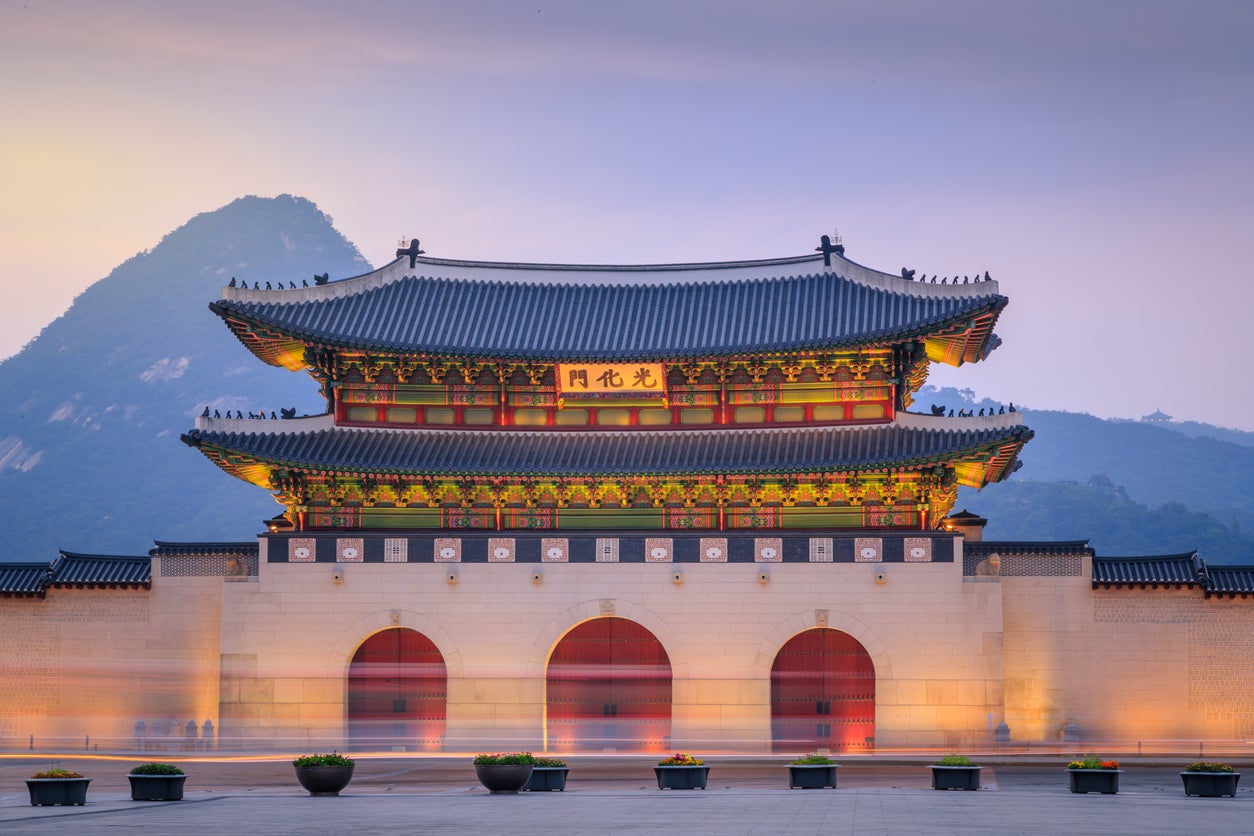
Nuts and bolts
What currency do I need?
South Korean won (with around 1,500 won to £1 at the time of writing).
What language do they speak?
Korean.
Should I tip?
Tipping is not generally necessary.
What’s the time difference?
GMT +8.
What’s the average flight time from the UK?
10 hours
How should I get around?
An incredibly dense network of railway and subway lines criss-crosses every corner of this sprawling city. From Incheon, where you’re likely to arrive, take the Airport Express to Seoul Station and catch the Metro from there. Single Metro tickets are 1,850 won /£1.20 (500 won of this is a deposit for the card you get back after every trip by putting the card back in a special machine).
What’s the best view?
Because it’s plonked on top of Namsan Mountain, the N Seoul Tower reaches even further into the sky and affords sweeping views over the capital from its observation level. Open Sunday to Friday 10am-11pm, Saturday 10am-midnight. 16,000 won/£10 per adult, 12,000 won/£8 per child.
Insider tip?
K-Pop fans should head to SMTOWN in the COEX centre. There’s a permanent exhibition of posters and photos about your fave K-Pop heroes signed to the famous SM Label, as well as a venue, cafe and a shop where you can snaffle merch. Open daily 11am-10pm.
More information
Visit english.visitseoul.net.
Getting there
Trying to fly less?
Take a cargo ship to the US and dock at New York or another East Coast port then travel across to LA by Amtrak train and pick up another boat connection from Long Beach to Qingdao. You can disembark from a cargo boat in South Korea but not embark, so this Chinese connection works well, with a ferry to Seoul from Qingdao.
Fine with flying?
Fly with Qatar Airways from London to Seoul via Doha. Carriers with direct links include Asiana and Korean Air.







